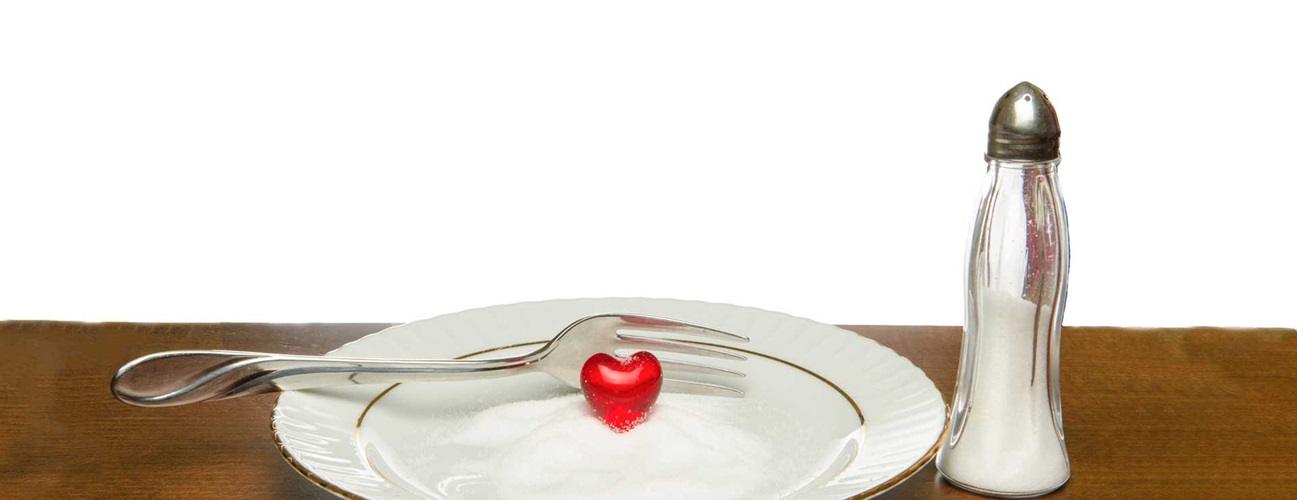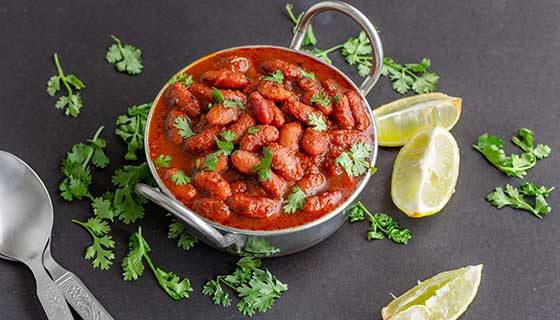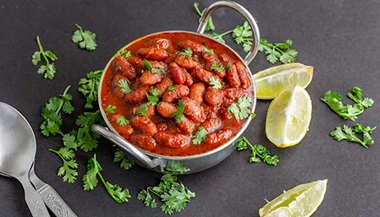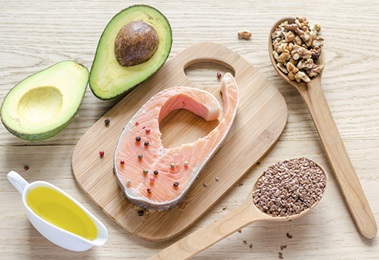ABCs of Eating Smart for a Healthy Heart
Eating a diet that helps your heart can be boiled down to four words: “Eat like a Mediterranean,” says Johns Hopkins dietitian Christie A. Williams, M.S., R.D.N. The Mediterranean diet—so named because it’s similar to the native diet consumed in places like Greece and Italy—is a low simple-carbohydrate, healthy-fat, lean-protein way of eating, she says.;

The Mediterranean diet isn’t a strict diet per se—it’s simply guidelines that provide plenty of choices and variety. “It tastes good, helps you feel full without overeating, and you can get these foods in any season no matter where you live,” Williams says.
Here are the ABCs of this heart-healthy eating plan:
A. Avoid unhealthy fats, and choose healthy fats.
Unsaturated fats should make up most of your fat intake. These include fatty fish (see B, below, for more about fish), olive oil and other vegetable oils, and nuts, such as walnuts.
Limit saturated fats, which come primarily from animal sources (butter, red meat). Choose lean proteins, like chicken without the skin. Opt for 1 percent or skim milk and dairy products, rather than 2 percent or whole milk.
Avoid trans fats altogether. On processed food labels, watch for the words “partially hydrogenated oils” and skip those foods.
B. Buy beans, fish and other lean proteins.
Beans of any kind—white beans, black beans, kidney beans and so on—can be served in many ways, from entrées to salad toppers to side dishes, and they provide important fiber as well as protein.
Fatty fish, like salmon, trout and tuna, contain good-for-you omega-3 polyunsaturated fats, which help lower triglyceride (a type of fat) levels and may modestly lower blood pressure. “A salmon burger is a great way to add variety to your diet,” Williams suggests.
Limit red meat to lean cuts and serve it in side-dish-sized portions. Lean proteins feed your body without providing unhealthy fats—which means thinking beyond steak.
C. Choose carbs carefully.
Carbohydrates are the sugars, fiber and starches in food that give your body energy. But some carbs are better for you than others.
Choose carbs from whole-grain sources (such as oatmeal or whole wheat bread) rather than processed and refined carbs (such as white bread and white rice). Read labels to avoid added sugar, a common source of extra carbs. Johns Hopkins research has shown that people on low simple-carbohydrate diets lose more weight more quickly, especially dangerous belly fat (a risk factor for heart disease), than those who focus only on restricting fats.
D. Drink with deliberation.
“Diet” refers to what you drink as well as what you eat. Many beverages add calories (and extra weight) without much nutritional benefit. Three common culprits:
- Alcohol. The recommended amount of alcohol is one drink per day for a woman, or two drinks for a man.
- Soda pop. A typical 12-ounce can of soda has 150 calories and roughly 9 teaspoons of sugar. The new 2015 Dietary Guidelines for Americans (which will be released in March) call for no more than 12 teaspoons of sugar per day from any source.
- Juice and other sugary drinks. There’s much more fiber in whole food than juice. Along with soda, fruit juice and other sugary drinks account for much of the excess sugar Americans consume. “I’d rather see you eat an orange for breakfast than drink orange juice,” Williams says.
E. Eat a wide-variety of foods—especially from plants.
A heart-smart diet tends to be a varied one. These standout foods are often under-consumed:
- Dark-green leafy vegetables. Natural sources of fiber and antioxidants, such as spinach, kale, lettuce, Swiss chard, collard greens, arugula and broccoli, also help the body break down homocysteine, an amino acid that’s linked to a higher risk of cardiovascular disease, Williams says.
- Nuts. “Eating just 5 ounces of nuts per week is linked to decreased cardiovascular disease,” Williams says. Walnuts have more omega-3 fatty acids—which reduce bad cholesterol levels—than other nuts.
- Soy. Edamame, a soy dish, is a good substitute for animal protein that also reduces total cholesterol levels. Half a cup of shelled edamame provides 8 grams of protein.
F. Limit your sodium
Keep your sodium intake to 2300 milligrams (mg) per day, or 1 teaspoon of salt per day. You can do this by avoiding canned or processed foods.
G. Get your exercise
Every week, be sure to include 150 minutes of moderate aerobic activity and two or more days of muscle strength activities.
What the Experts Do Yes, a Dietitian Eats Chocolate
“People want something sweet no matter what their diet,” says Johns Hopkins dietitian Christie A. Williams, M.S. “Dark chocolate actually has antioxidants that protect blood vessels, decrease LDL cholesterol and help blood pressure.”
To get the most benefit, Williams chooses bars whose labels show they contain at least 70 percent cocoa. “Sometimes I look for dark chocolate-covered walnuts or almonds because nuts are also good for the heart.”
The only catch, she says, is that dark chocolate has to be part of an isocaloric diet—that’s dietitian-speak for eating about the same total amount of food every day in a healthy amount for your weight and height. In other words, she says, you can indulge as long as you don’t overdo. Some research on the cardiovascular benefits of dark chocolate puts that limit at 50 grams a day, or just under 2 ounces. Remember that chocolate has calories in it.






